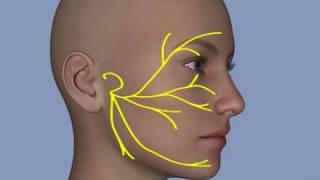- A/1, Satyalok Society, Near Police Station, Near Gadital Petrol Pump, Hadapsar, Pune
Facial Paralysis
- Home
- Facial Paralysis
Facial Paralysis
Best Facial Paralysis Hospital in Pune: Unmatched Expertise and Superior Solutions with Dr. Satish Bhong
When the face loses voluntary muscular movement on one side due to malfunctioning 7th cranial nerve (also called the facial nerve and the one that’s linked to face muscles), the resulting condition is called facial paralysis.
Facial paralysis can be caused due to an ENT condition called Bell’s Palsy. Bell’s palsy is a weakness or paralysis of the facial muscles occurring due to damage sustained by the 7th facial nerve. It results in a droopy appearance of one side of the face. Fortunately, most Bell’s palsy cases improve in 2 weeks’ time and 80% patient recover within 3 months. However, supervision by an ENT surgeon during the recovery period is recommended.
Causes
Facial Paralysis
Facial paralysis can strike due to several reasons. Those linked to ENT include following conditions: –
- Bell’s palsy
- Chronic otitis media (especially the unsafe type)
- Malignant otitis externa
- Road traffic accident trauma
- Complications caused by ear surgeries
- Ear malignancies
- Facial nerve tumours
- Acoustic neuroma
- Glomus tumours
Bell’s Palsy
Bell’s palsy results from swelling, compression or inflammation of the 7th cranial nerve controlling facial muscles. Its precise reason is unknown as yet but it is suspected that it may be viral in origin.
While Bell’s palsy can strike anyone at any age, it strikes oftener in pregnant women and diabetic women. An attack of Bell’s palsy can also come after a bout of flu or cold or respiratory illness.
Symptoms of Facial Paralysis
- Angular drooping of the mouth
- Dripping of saliva from mouth’s edge
- Loss of facial movement
- The disappearance of forehead wrinkles.
Symptoms of Bell’s Palsy
- Paralysis on one side of the face
- A headache, pain in the face and/or ear
- Drooling
- Loss of tasting ability
- Inability to close one eye
- Excessive tear formation, or on occasion, lack of tears
- Hypersensitivity to sound
Precautions & Treatments
- The doctor first examines the patient for facial weakness on one side of the face and including the forehead, eyelids, cheek and lips, in most cases. To detect and verify the extent of nerve damage, and to assess the likely pace of recovery, the doctor may advise a test called electroneuronography (ENoG). Magnetic resonance imaging (MRI) or computed tomography (CT) scan can be conducted to ensure any structural causes of pressure on the facial nerve.
- Bell’s palsy is not a permanent problem. Most patients regain facial control within a few weeks (or a few months, in some cases) even without treatment. However, if the attack is no more than 2-3 days old, the doctor will prescribe corticosteroids and/or antiviral medications for faster recovery.
- Bell’s palsy tends to affect the eyelid’s natural blinking ability which can cause irritation and dryness. If not taken care of adequately, it can lead to serious corneal damage. To keep the eye moist and shielded, the doctor will prescribe eye drops and eye patches until smooth eye closure begins again.
An ENT surgeon will advise a surgery to a - Bell’s palsy patient only in rare cases and only as a last resort when the facial paralysis is total and severe.

